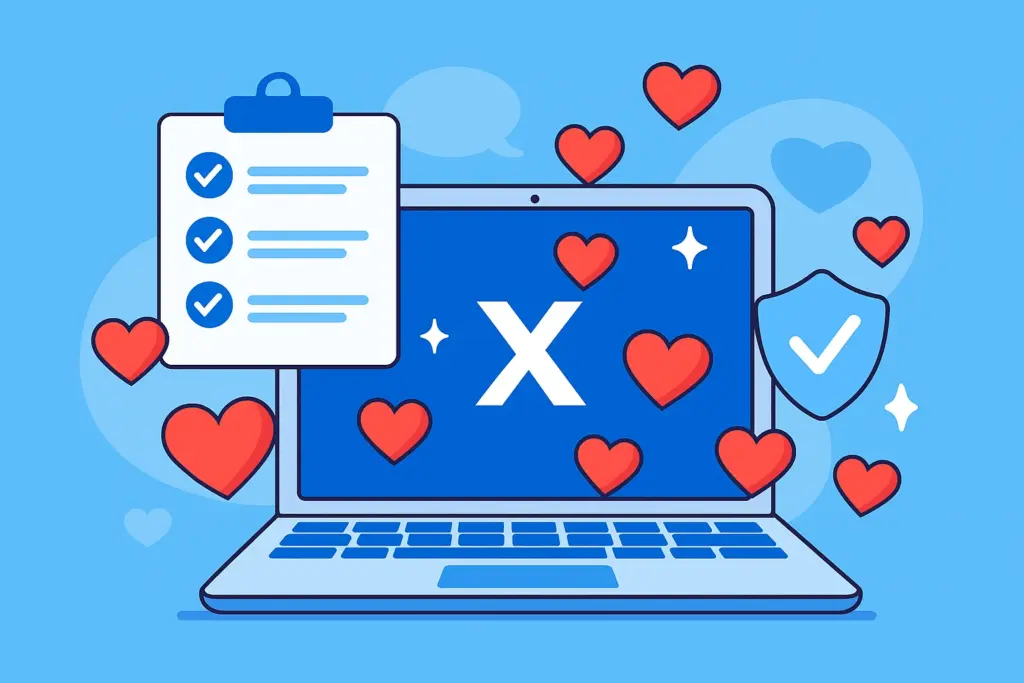
Buying Twitter likes can be effective, but only when it’s done with a clear strategy. Instead of thinking of purchased likes as just numbers, treat them as a tool to support your campaigns, highlight key tweets, and strengthen brand credibility. Here’s how to approach it strategically.
- Align Purchased Likes With Your Campaign Goals
- Focus on Key Tweets Instead of Every Post
- Use Purchased Likes to Build Early Momentum on Fresh Content
- Mix Engagement Types: Likes, Retweets, and Comments Together
- Keep Growth Proportional to Your Account Size
- Monitor Competitor Strategies for Benchmarking
- Use Insights From Purchased Likes to Improve Organic Strategy
- Build Long-Term Credibility Alongside Short-Term Boosts
Table of Contents
- 1 Align Purchased Likes With Your Campaign Goals
- 2 Focus on Key Tweets Instead of Every Post
- 3 Use Purchased Likes to Build Early Momentum on Fresh Content
- 4 Mix Engagement Types: Likes, Retweets, and Comments Together
- 5 Keep Growth Proportional to Your Account Size
- 6 Monitor Competitor Strategies for Benchmarking
- 7 Use Insights From Purchased Likes to Improve Organic Strategy
- 8 Build Long-Term Credibility Alongside Short-Term Boosts
Align Purchased Likes With Your Campaign Goals
The first step is to connect your purchase with a clear objective. Are you trying to promote a product launch, build social proof for a new account, or boost visibility on a trending conversation? By aligning likes with your broader goals, you make sure they work toward something meaningful instead of inflating vanity metrics.
Examples of goal alignment:
- Product launch tweet: Likes signal popularity and draw attention.
- Thought leadership post: Engagement builds authority in your niche.
- Promotional offer: Extra visibility helps increase click-through rates.
When your likes serve a campaign purpose, they become a marketing tool, not just empty numbers.
Focus on Key Tweets Instead of Every Post
Not every tweet needs purchased engagement. Spreading likes across all content dilutes the impact and wastes resources. Instead, focus on tweets that truly matter for your brand, announcements, campaigns, or posts with high organic potential.
By concentrating likes on high-value tweets, you create stronger signals of credibility. These posts are more likely to be retweeted, shared, and even picked up by the algorithm for greater visibility.
Use Purchased Likes to Build Early Momentum on Fresh Content
Timing is just as important as quantity. Tweets gain the most traction in the first hours after posting, so applying purchased likes early can help your content break through the noise. Early engagement boosts your chances of being featured in feeds, trending sections, or hashtag searches.
Think of purchased likes as the “spark” that helps your organic audience notice and amplify your content.
Mix Engagement Types: Likes, Retweets, and Comments Together
If your tweets receive only likes and no other engagement, it can look unnatural. Real audiences interact in multiple ways, they retweet, reply, and sometimes even quote-tweet with their own thoughts. That’s why one of the best practices is to mix different engagement types instead of relying solely on purchased likes.
- Add retweets for wider reach
- Use comments for social proof and conversation
- Combine likes with organic polls or questions to drive replies
This creates a healthier, more balanced profile where engagement looks authentic and not artificially inflated.
Keep Growth Proportional to Your Account Size
A small account with 300 followers but 2,000 likes on every tweet looks suspicious. Growth should always match your account’s current reach and authority. The safest way to buy likes is to keep them proportional to your follower count and organic activity levels.
- Small accounts: 20–50 likes on a key post
- Mid-sized accounts: 100–300 likes depending on reach
- Large accounts: Higher volumes, but spread out naturally
This proportional growth makes your engagement look consistent, reducing the risk of raising red flags.
Monitor Competitor Strategies for Benchmarking
One overlooked best practice is to study what works in your niche. Look at how competitors’ tweets perform: how many likes, retweets, and replies they typically receive. This gives you a benchmark to guide your own purchased likes, ensuring your engagement levels stay realistic for your industry.
Competitor benchmarking helps you avoid standing out unnaturally and gives you insights into what kind of engagement resonates with your target audience.
Use Insights From Purchased Likes to Improve Organic Strategy
Purchased likes shouldn’t be the end goal, they should give you clues about what works. If a tweet with purchased likes starts attracting real retweets and comments, that’s a sign the content resonates. Track which types of posts perform best with a little boost and replicate those patterns in your organic strategy.
What to analyze:
- Which tweets convert purchased likes into organic engagement
- Which topics, hashtags, or formats drive the most interaction
- Whether timing (morning, midday, evening) impacts performance
By using purchased likes as a testing tool, you gather valuable insights that make your future tweets stronger without needing as much paid support.
Build Long-Term Credibility Alongside Short-Term Boosts
The best practice of all is to remember that purchased likes are a tactical boost, not a full strategy. Long-term credibility comes from consistent posting, authentic audience engagement, and providing value through your content.
Ways to strengthen credibility while using purchased likes:
- Engage with real followers by replying to comments
- Run polls and Q&As to spark genuine interaction
- Share behind-the-scenes or thought-leadership content
- Balance every paid campaign with organic activity
When your purchased likes are just one part of a broader engagement strategy, they enhance rather than replace your brand’s reputation.





